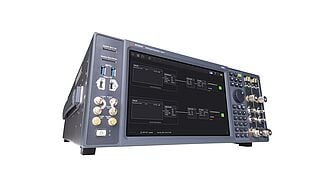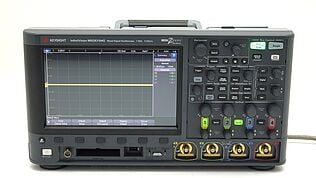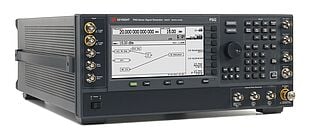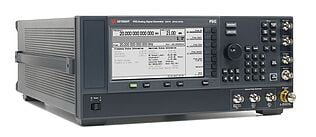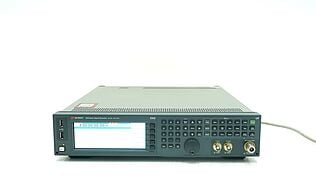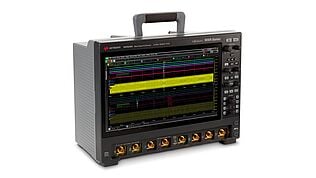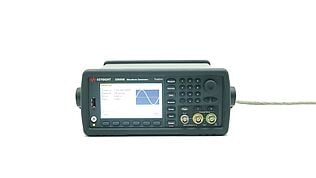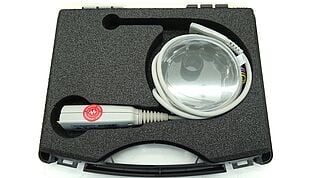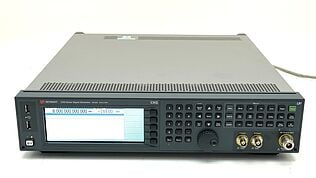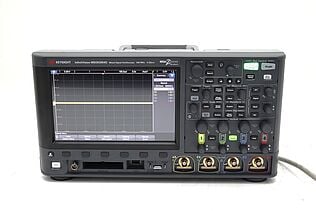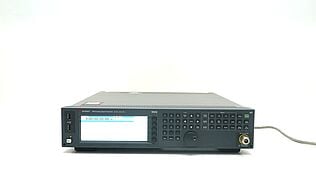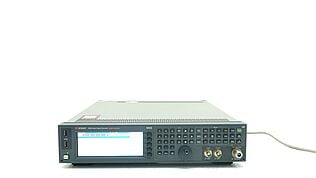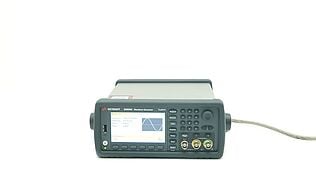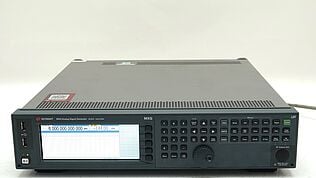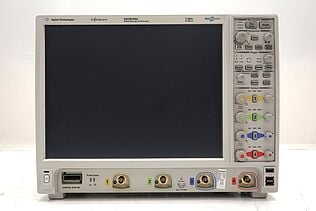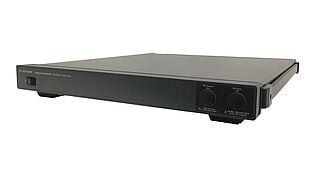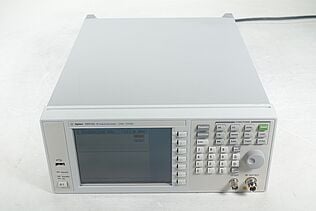- Introduction
- The Fundamentals of Electrical Storage
- How Capacitors Store Energy
- Why Capacitance Matters
- Applications of Capacitance in Real-World Systems
- The Capacitance Formula: Breaking Down the Equation
- Components and Units of the Capacitance Formula
- Practical Example
- Key Variables in the Capacitance Formula: What You Need to Know
- Charge (Q)
- Voltage (V)
- Capacitance (C)
- Real-World Context for These Variables
- Applying Capacitance Formulas: Real-World Engineering in Action
- How Capacitors Are Used in Circuits
- Capacitors in Modern Technology
- Why Capacitors Matter
- Common Mistakes in Capacitance Calculations and How to Avoid Them
- Common Mistakes in Capacitance Calculations
- How to Avoid Common Mistakes
- The Importance of Accuracy
- Resources for Mastering Capacitance: Tools and Tips for Success
- Books and Textbooks
- Online Courses and Tutorials
- Simulation Software
- Practical Calculators and Tools
- Additional Learning Tips
- Shop High-Quality, Pre-Owned Tools to Perfect Your Capacitance Measurements!
- Conclusion
- Whenever You’re Ready, Here Are 5 Ways We Can Help You
Ever find yourself staring at a capacitor, trying to decipher how it fits into the big picture of your circuit design?
Maybe you’ve wrestled with calculating capacitance, wondering if you’re using the right formula or if a small error could derail your project.
You’re not alone—engineers everywhere face the same frustrations. Whether it’s smoothing voltage, filtering noise, or managing energy storage, understanding capacitance is the cornerstone of successful electrical design.
In this guide, we will break down capacitance step by step, turning complex equations into practical tools you can use. We will start with the basics of what capacitance is and why it matters, then dive into the key formula, real-world applications, and even common mistakes to avoid.
By the end, you will have the confidence and clarity to apply capacitance effectively in your projects, with resources to help you continue mastering this critical concept.
The Fundamentals of Electrical Storage
Capacitance lies at the heart of electrical engineering, serving as a cornerstone for countless applications.
At its core, capacitance refers to the ability of a device, called a capacitor, to store electrical energy as an electric charge. This property plays a critical role in modern electronics, helping stabilize, filter, and manage energy across various systems.
How Capacitors Store Energy
Capacitors work by separating positive and negative charges between two conductive plates, which are insulated by a non-conductive material known as a dielectric.
When voltage is applied, the capacitor creates an electric field between the plates, holding the charge until it’s needed.
This mechanism allows capacitors to store energy temporarily and release it when the circuit demands, making them indispensable for energy management.
Why Capacitance Matters
Capacitance is crucial for maintaining the stability and functionality of electronic systems. By storing energy, capacitors can:
- Stabilize voltage levels: Smooth out fluctuations in power supplies, ensuring steady operation for sensitive components.
- Filter unwanted signals: Block noise or interference in circuits, improving signal quality in audio and communication systems.
- Provide backup power: Deliver short bursts of energy in devices like cameras or power tools, where sudden energy demands occur.
Applications of Capacitance in Real-World Systems
Capacitors are everywhere, quietly improving the efficiency and performance of various technologies. Here are a few examples:
- Power supplies: Capacitors stabilize voltage in power supply units, protecting sensitive electronics from dips and spikes.
- Audio systems: They filter unwanted noise to deliver cleaner sound in audio amplifiers and recording equipment.
- Renewable energy: Capacitors help manage energy flow in solar panels and wind turbines by storing excess energy and releasing it during periods of low output.
- Electronic devices: From smartphones to laptops, capacitors ensure smooth operation by managing energy in complex circuits.
Capacitors may seem simple, but their ability to store and release energy makes them vital in the design and function of countless electrical systems. Understanding how capacitance works is your first step toward mastering its applications in engineering.
The Capacitance Formula: Breaking Down the Equation
The capacitance formula provides a straightforward way to quantify how much charge a capacitor can store at a given voltage. It is expressed as:
C = Q / V, where:
- C is capacitance, measured in farads (F).
- Q is the charge stored, measured in coulombs (C).
- V is the voltage across the capacitor, measured in volts (V).
Components and Units of the Capacitance Formula
| Component | Symbol | Unit | Description |
|---|---|---|---|
| Capacitance | C | Farads (F) | The capacity of a capacitor to store charge per unit of voltage. |
| Charge | Q | Coulombs (C) | The total electric charge stored in the capacitor. |
| Voltage | V | Volts (V) | The electrical potential difference across the capacitor’s plates. |
Practical Example
If a capacitor with a capacitance of 10 microfarads (10 µF) is charged to 5 volts, the charge stored can be calculated using the formula:
Q = C × V
Q = 10 × 10⁻⁶ × 5 = 50 × 10⁻⁶ C (50 µC).
This table and example demonstrate how the formula works, ensuring that you can apply it correctly in your own circuit designs.
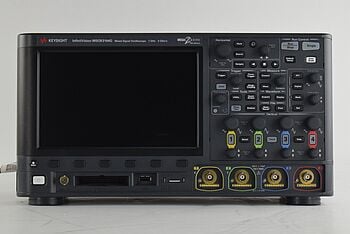
Key Variables in the Capacitance Formula: What You Need to Know
Understanding the key variables in the capacitance formula is essential for accurately applying it in real-world scenarios.
Let’s break down each component—charge (Q), voltage (V), and capacitance (C)—to clarify their roles in circuit functionality and energy storage.
Charge (Q)
Definition: Charge is the total amount of electric charge stored in a capacitor, measured in coulombs (C). It represents the energy held between the capacitor’s plates.
Role in circuits: Charge determines the energy stored in the capacitor, which can be released to stabilize voltage, filter signals, or provide temporary power.
How Charge is Measured
- Formula: Q=C×V
To calculate charge, multiply the capacitance (C) by the voltage (V) across the capacitor.
- Tools:
- Multimeters: Multimeters can indirectly measure charge by providing voltage and capacitance readings.
- Oscilloscopes: Oscilloscopes are used to observe charge flow in dynamic circuits.
Voltage (V)
Definition: Voltage is the potential difference between the two plates of the capacitor, measured in volts (V). It drives the movement of charge to and from the capacitor.
Role in circuits: Voltage influences how much charge a capacitor can store for a given capacitance. Higher voltage allows more energy storage, but exceeding a capacitor’s voltage rating can cause damage.
How Voltage is Measured
- Tools:
- Digital Multimeters: Multimeters provide quick and accurate voltage readings.
- Oscilloscopes: Oscilloscopes monitor voltage changes in real time, crucial for AC circuits.
Capacitance (C)
Definition: Capacitance is the ability of a capacitor to store electric charge per unit of voltage, measured in farads (F).
Role in circuits: Capacitance defines the capacity of a capacitor to stabilize, filter, or store energy in electronic systems.
How Capacitance is Measured
- Tools:
- LCR meters (inductance, capacitance, and resistance): Specifically designed for capacitance measurement.
- Multimeters with capacitance mode: Useful for general-purpose measurements.
- Formula: C=Q/V
Knowing charge and voltage, you can calculate capacitance to determine how much energy the capacitor can handle.
Real-World Context for These Variables
| Variable | Role in Circuits | Example |
|---|---|---|
| Charge | Determines the amount of energy stored, critical for timing and energy delivery in circuits. | Timing circuits use precise charge control to regulate oscillation rates in clocks and timers. |
| Voltage | Ensures consistent power delivery and stabilization in sensitive electronic systems. | Stabilizes power supplies, preventing voltage dips that could disrupt operations. |
| Capacitance | Defines a capacitor’s capacity to store and release energy, crucial for filtering and stabilization. | Noise filtering in audio systems and maintaining power quality in renewable energy systems. |
Applying Capacitance Formulas: Real-World Engineering in Action
Capacitors are the unsung heroes of modern electronics, quietly performing critical tasks across countless applications.
By understanding and applying capacitance formulas, engineers can optimize the functionality and reliability of circuits, enabling groundbreaking advancements in technology.
How Capacitors Are Used in Circuits
1. Smoothing voltage fluctuations
Capacitors stabilize voltage by absorbing excess energy and releasing it when there’s a dip. This is essential in power supply circuits, where consistent voltage ensures safe and efficient operation of electronic components.
Example:
In an AC-to-DC power converter, capacitors smooth the rectified current, minimizing voltage ripple and protecting sensitive devices.
2. Filtering unwanted signals
Capacitors filter out high-frequency noise, improving the clarity and performance of signals in audio systems, communication devices, and other electronics.
Example:
In audio amplifiers, capacitors block low-frequency noise, ensuring crisp sound quality without distortion.
3. Providing temporary power storage
When a circuit demands sudden bursts of energy, capacitors deliver it instantly, preventing system instability.
Example:
In cameras, capacitors provide the quick energy boost required to fire a flash.
4. Timing circuits
Capacitors and resistors combine to create timing circuits, which are used in oscillators, clocks, and signal generators.
Example:
In blinking LED circuits, a capacitor’s charge and discharge cycle controls the on/off timing.
Capacitors in Modern Technology
Capacitors have become indispensable in today’s advanced technologies. Here are some examples of their real-world applications:
- Smartphones and computers
Capacitors enable stable power delivery to processors, ensuring seamless performance in high-demand scenarios like gaming or video editing.
- Renewable energy systems
In solar panels, capacitors store excess energy and release it during low-sunlight periods, enhancing energy efficiency and reliability.
- Automotive applications
Capacitors in electric vehicles manage energy flow in regenerative braking systems, improving battery performance and extending lifespan.
- Medical equipment
In defibrillators, capacitors store and release precise amounts of energy needed to deliver life-saving electric shocks.
Why Capacitors Matter
The ability to calculate capacitance and understand its role in circuits ensures engineers can design systems that meet the demands of modern applications.
Whether it’s stabilizing voltage, filtering signals, or providing energy on demand, capacitors form the backbone of reliable, high-performing electronics.
Common Mistakes in Capacitance Calculations and How to Avoid Them
When working with capacitance formulas, even small missteps can lead to significant errors in circuit design.
Understanding and avoiding common pitfalls ensures your calculations are accurate and your designs perform as intended.
Common Mistakes in Capacitance Calculations
- Misreading units of measurement
- Confusing microfarads (µF), nanofarads (nF), or picofarads (pF) is a frequent issue, especially when transitioning between data sheets and calculations.
- For example, treating 10 µF as 10 pF leads to values that are 1,000,000 times smaller than intended.
- Neglecting to convert values
- Forgetting to convert voltage, charge, or capacitance into consistent units can produce inaccurate results.
- Example: Using millivolts (mV) instead of volts (V) without conversion can skew calculations.
- Using incorrect formulas
- Failing to use the correct formula for a specific circuit scenario, such as series or parallel capacitors, leads to incorrect results.
- In series: \(C_{total }= 1 / (1 / C_1 + 1 / C_2 + …)\)
- In parallel: \(C_{total} = C_1 + C_2 + …\)
- Overlooking tolerances and ratings
- Ignoring a capacitor's tolerance or voltage rating can result in unreliable or unsafe designs. A 10% tolerance can make a significant difference in critical applications.
- Relying solely on calculators
- Over-reliance on online tools or software without understanding the underlying principles can lead to errors if input values are incorrect or misinterpreted.
How to Avoid Common Mistakes
- Double-check Units
- Use a consistent unit system throughout your calculations. When in doubt, convert values into the base SI units (i.e., farads, volts, coulombs).
- Understand the context
- Familiarize yourself with circuit configurations (series or parallel) and ensure you apply the correct formula for the situation.
- Verify data sheet values
- Always cross-check the specifications from the capacitor's data sheet, especially tolerance, voltage ratings, and temperature coefficients.
- Use tools wisely
- Employ reliable tools like digital multimeters, oscilloscopes, and capacitance meters to validate your calculations.
- Use simulation software to model circuits and catch potential errors before physical implementation.
- Adopt a systematic approach
- Break down complex calculations into smaller steps and validate each result as you progress.
- Keep detailed notes to track your methodology and simplify troubleshooting if errors arise.
The Importance of Accuracy
Precision in capacitance calculations avoids costly mistakes, like system malfunctions or component failures.
By taking the time to verify your work, using the right tools, and staying methodical, you can ensure your designs are robust and reliable. Remember, diligence in the calculation phase saves time and resources in the long run.
“Used equipment offers premium quality at a lower price and quicker shipping time." – Erica (Keysight Account Manager)

Resources for Mastering Capacitance: Tools and Tips for Success
Mastering capacitance concepts takes more than just understanding the basics—it requires access to reliable resources and tools that can simplify learning and enhance practical application.
Below is a curated list of resources and recommendations to help you deepen your knowledge and refine your skills.
Books and Textbooks
- “The Art of Electronics” by Paul Horowitz and Winfield Hill
A comprehensive guide covering fundamental and advanced electronics concepts, including capacitance and its applications.
- “Electrical Engineering 101” by Darren Ashby
An excellent primer for beginners, this book introduces electrical concepts in a clear, approachable way.
- “Capacitors: Technology and Trends” by Tomas Zednicek
A specialized resource focusing on the latest capacitor technologies and real-world applications.
Online Courses and Tutorials
- edX: Circuits and Electronics
Offers an in-depth look at circuits, including modules on capacitors and their role in energy storage and signal processing.
Website: edX
- Khan Academy: Electrical Engineering
Features free, interactive lessons on capacitance, charge, and voltage with easy-to-follow explanations.
Website: Khan Academy
- Coursera: Fundamentals of Electrical Circuits
Provides practical insights into circuit analysis, including the use of capacitors in real-world systems.
Website: Coursera
Simulation Software
- LTspice
A powerful, free tool for simulating electronic circuits, including capacitor behavior under different conditions.
- Multisim by NI
Ideal for designing and analyzing circuits in a virtual environment, with robust tools for exploring capacitance effects.
- Tinkercad Circuits
A beginner-friendly platform that combines circuit design with real-time simulation, perfect for experimenting with capacitors.
Practical Calculators and Tools
- Capacitance Meters
Devices like multimeters help measure capacitance directly in physical components.
- Oscilloscopes
Tools such as oscilloscopes allow for real-time observation of capacitive effects in dynamic circuits.
Additional Learning Tips
- Engage in Hands-On Practice:
Use simulation software to test theoretical concepts in a safe, controlled environment before applying them in real-world scenarios.
- Join Online Communities:
Forums like Electronics Stack Exchange or Reddit’s r/ElectricalEngineering provide platforms to ask questions and share insights with peers.
- Stay Updated:
Subscribe to electronics journals or blogs like EDN and EE Times to keep up with advancements in capacitor technology.
Shop High-Quality, Pre-Owned Tools to Perfect Your Capacitance Measurements!
Conclusion
Capacitance plays a pivotal role in electrical engineering and electronics, serving as the foundation for countless applications.
From smoothing voltage fluctuations to filtering signals and storing energy, capacitors are indispensable components in modern technology. By understanding the capacitance formula, its key variables, and real-world applications, you can design circuits with greater accuracy and efficiency.
Avoiding common mistakes and utilizing reliable resources further improves your ability to apply these concepts confidently. Whether you’re a seasoned engineer or just starting, mastering capacitance ensures your designs meet the demands of today’s cutting-edge technologies.
Understanding capacitance can feel daunting at first, but with the right tools and a methodical approach, you can simplify the process and apply it effectively in your projects.
Keep exploring, stay curious, and remember that every great engineer once started where you are now. The journey to mastering capacitance is as much about learning as it is about the innovation you will create along the way.
Whenever You’re Ready, Here Are 5 Ways We Can Help You
- Browse our premium used network analyzers, oscilloscopes, signal analyzers and waveform generators.
- Call tech support US: 1 800 829-4444
Press #, then 2. Hours: 7am – 5pm MT, Mon– Fri - Talk to our sales support team by clicking the icon (bottom right corner) on every offer page
- Create an account to get price alerts and access to exclusive waitlists
- Talk to your account manager about your specific needs




